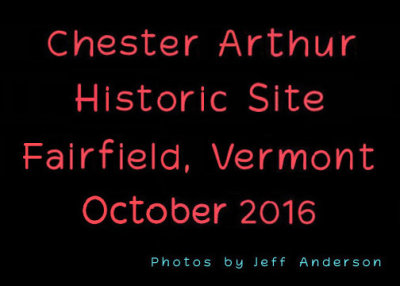
Chester Arthur Historic Site, Fairfield, Vermont cover page. |
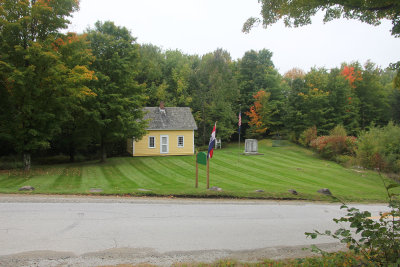
Site of Chester A. Arthur's childhood home. The structure is a museum building, not the family house. |
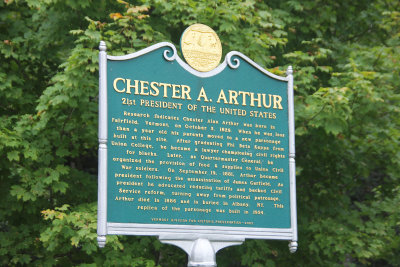
Arthur's parents moved to a new parsonage at this site when Arthur was less than one-year old. |
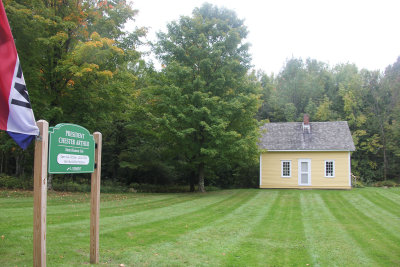
Sign and flag outside the historic site. |
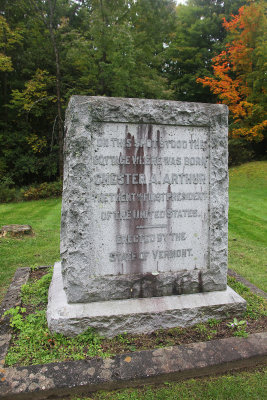
Stone marking where the family cottage once stood. |
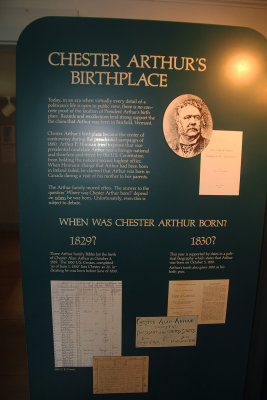
Sign explaining that there is controversy as to when Chester Arthur was born. |
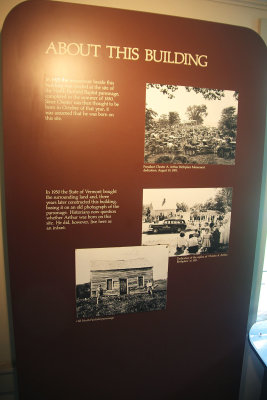
The building for this historic site was built where the Fairfield Baptist parsonage once stood. The parsonage was built in 1830. |
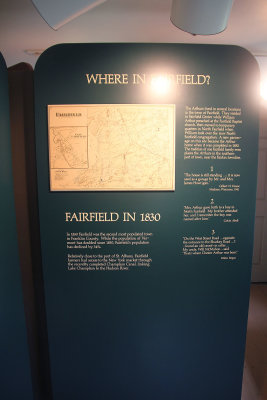
Sign explaining where Fairfield, Vermont is located. |
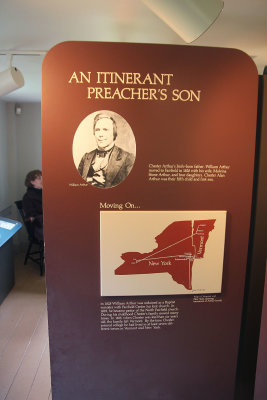
Chester Arthur's father, William Arthur, was an itinerant preacher's son. |
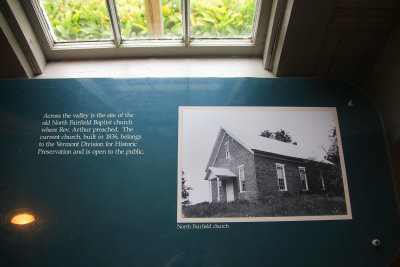
Arthur's father preached at the North Fairfield Baptist Church, which was across the valley. |
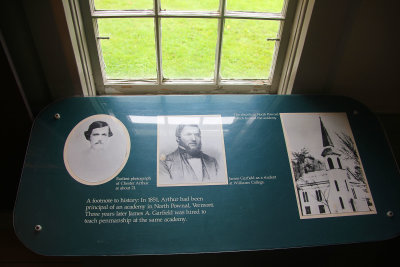
In 1851, Chester Arthur was a principal of an academy in North Pownal, Vermont. |
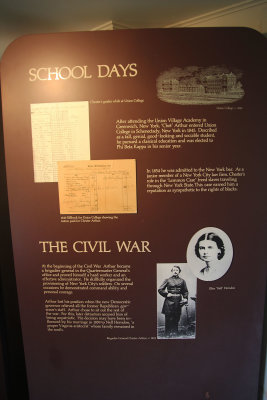
Sign describing Arthur's school days and Arthur's service in the Union Army as a brigadier general. |
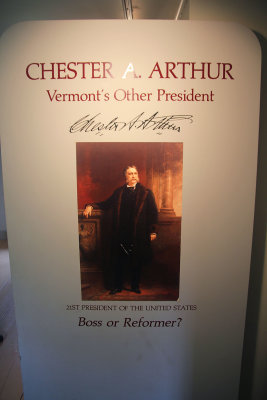
Chester Arthur was one of two presidents from Vermont, the other being Calvin Coolidge. |
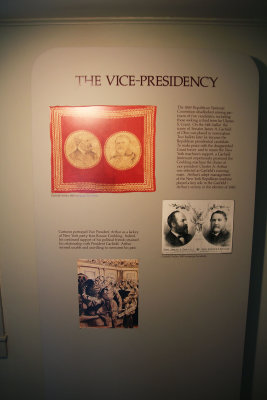
He was ridiculed as Vice President as a lackey of New York party boss, Roscoe Conkling. |
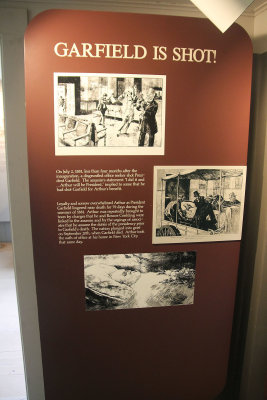
On July 2, 1881, Garfield was shot by a supporter of Chester Arthur. Garfield lingered for 79 days before he died. |
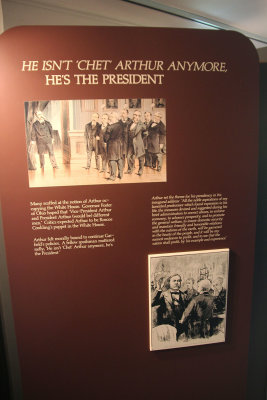
When Arthur assumed the presidency, he felt morally bound to Garfield's policies as a reformer. |
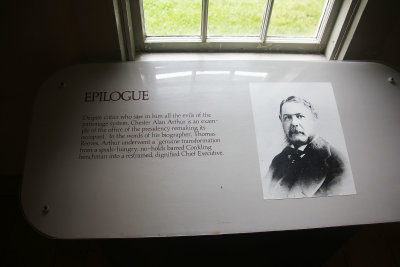
Chester Arthur was transformed by the presidency. He went from a "spoiler" to a "reformer." |
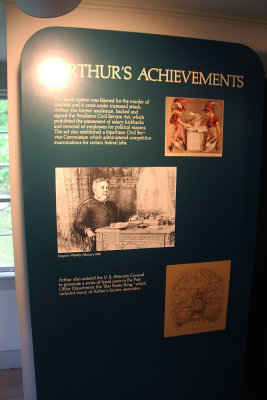
His biggest achievements were as a reformer. |
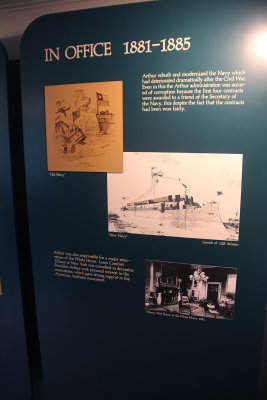
Arthur also rebuilt the U.S. navy, making it into one of the world’s great fleets. |
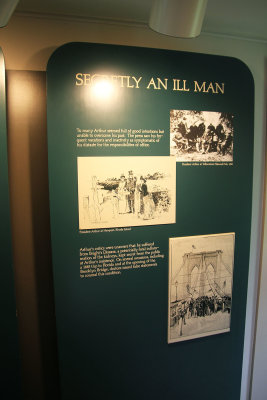
Chester Arthur concealed his Bright Disease from the public. He had doctors issue false statements about his health. |
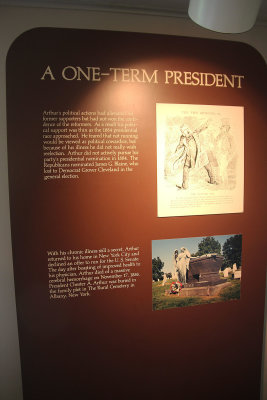
Arthur was a "one-term president." He did not try hard for a second term since he knew that he was ill. |
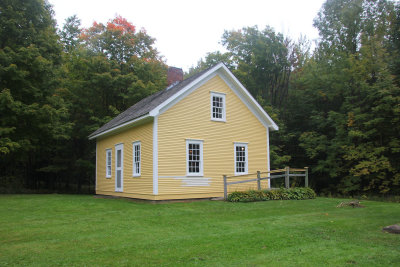
Another view of the museum building at the Chester Arthur Historical Site. |
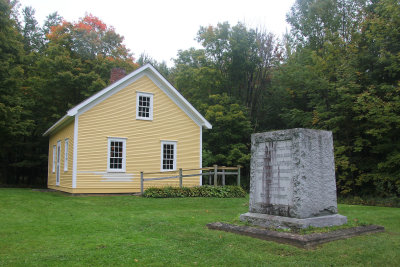
In front of the museum is the stone showing where the family cottage once stood. |
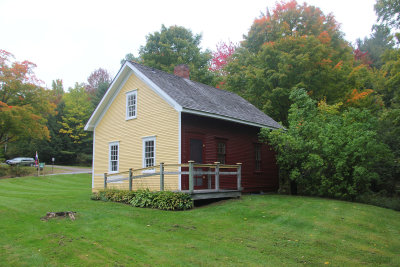
Back entrance of the museum building. |











